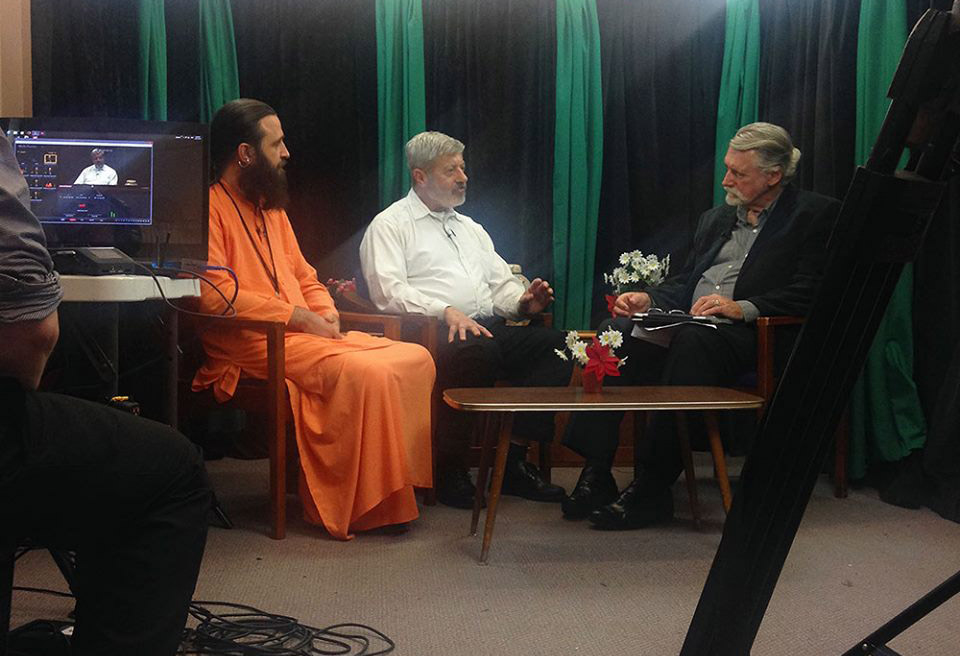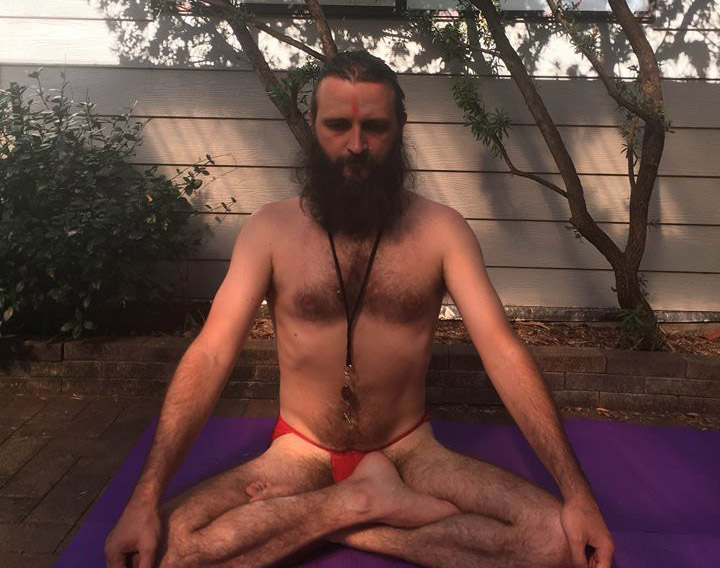The idea of 84 āsanas, which is often found in yoga texts, is based on the worship of 84 nātha–yogis. Each of these 84 nāthas is responsible for the evolution of one lakh of living beings (100,000). When you follow the yoga path, you develop the psychophysical, spiritual purity in yourself, that you radiate into space. By doing your practice you help not only yourself, but also your close ones. Souls reincarnate in different forms until they become perfect yogis, the symbolism of 84 āsanas is based on this principle. The most important thing here is to understand that āsana is not just a physical process, but also a psychophysical one. The purpose of many āsanas is to be able to stay stable in the position of siddha (siddhāsana). Generally, it is the ability to stay in a meditative posture for three hours, to hold it easily, so that you can meditate, remaining in the position, on something sublime and pure in it.
Tag Archives: āsana
My perception of the right āsana
Over the years of yoga practice, I have developed my own definition of what the true āsana is. The right āsana is that, which leads to the interconnection of the two main dimensions of all. And through this in particular you will find explanations of any categories of āsanas. What those dimensions are, physical and spiritual or other explanations will be found for this, for everyone at their stage of practice, this can vary and can always be flexible. But, for any practitioner at any moment, this awareness of polarities must be total.
Āsana concept in Patañjali’s Yoga Sūtras and Gorakhabānī
There are several mentions of the āsana therm in Gorakhabānī:
आसण बैसिबा पवन निरोधिबा थांन मांन सब धंधा |
गोरषनाथ आतमां विचारंत ज्यूं जल दीसै चंदा || ८२ ||
āsaṇ baisibā pavan nirodhibā thāṃn māṃn sab dhaṃdhā |
badaṃt goraṣnāth ātamāṃ vicāraṃt jyūṃ jal dīsai caṃdā || 82 ||
Seating (baisibā) in posture (āsaṇa), overmaster, calm (nirodhibā) vitality (pavana), external environment (thāṃna), your social image (māṃna), all worldly activities (saba dhaṃdhā).
Gorakshanath says (badaṃta goraṣanātha), “Comprehending oneself or Atman (ātamāṃ vicāraṃta) in the same way that (jyūṃ) the moon (caṃdā) is reflected (dīsai) in water (jala).”
दिढ अहार दिढ जे न्यंद्रा दिढ होई ||
कहै सुणौ रे पूता मरै न बूढा | || ||
āsaṇ diḍh ahār diḍh je nyaṃdrā diḍh hoī ||
goraṣ kahai suṇau re pūtā marai na būḍhā hoī || 125 ||
The position, location (āsaṇa) should be settled, stable (diḍha), the nutrition controlled (ahāra diḍha), whoever (je) sleeps (nyaṃdrā), should be (hoī) regulated (diḍha) in this. Goraksha says (goraṣa kahai), “Listen (suṇau), o (re) my spiritual son (pūtā). Then, will (hoī) not (na) be senility (būḍhā) and death (marai).”
Thanks to Gorakshanātha, much becomes clear with regard to the description of āsana in Yoga Sūtras of Patañjali. I am going to give explanations.
स्थिरसुखमासनम् ॥४६॥
sthira-sukham-āsanam || 46 ||
The position (āsana) must be stable (sthira) [with perfect inner space] (sukha).
The term āsana comes from the root ās, which can have several meanings. The main one is “to sit” or “a seat”, but it can also mean “a place of seating” and “space”. Still it can be translated as “to be”, “to stay” in something or “to live” somewhere, that may indicate the action itself. Thus, it may be a soul staying in the body as puruṣa: ‘pura‘ – a body and ‘uṣa‘ – that is in the body. For example, when we invoke some Deity, we offer him/her a place to sit. So, Nāthas texts often say that the bodies of all living beings were created by Śiva and āsanas too, and āsanas are as many as embodied beings. The main āsanas and number of embodied souls are 84 (siddha-puruṣas or nāthas, who realised in themselves or experienced themselves as Śiva-svarūpa).
Further, the term sukha many people translate very shallow and even in a “sporting way” as “comfortable” or “convenient” posture. However, I think that for a better understanding we should consider the etymology of the term. The term consists of the prefix su सु, which means something “good”, “perfect” and kha ख – “space”. So, if there are blockages in psychophysics, then you are aware of your body as the negative space (duhkha), the opposite of sukha. Practicing āsanas you are freed from blockages and become a pure space, and the purest space is the space of ātman. When your thoughts and body reflect it, they become stable (sthira). All this is what Gorakshanātha spoke about, reflecting on the ātman (it is unchangeable, eternal), the body becomes like water reflecting the moonlight (ātman). If the body reflects the ātman, self nature, then body becomes like it, reflecting its stability.








